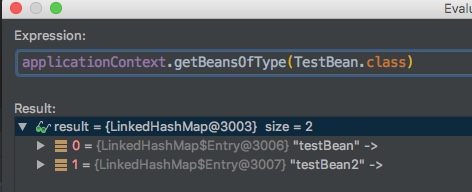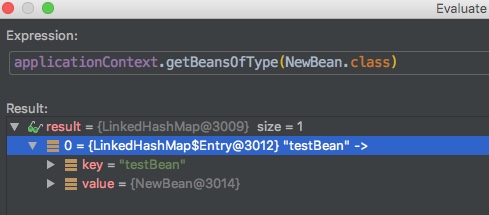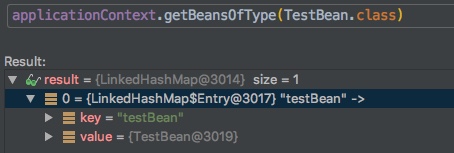Spring + mybatis + mysql 使用事务的几种姿势 主要记录下spring是如何支持事务的,以及在Spring结合mybatis时,可以怎么简单的实现数据库的事务功能
I. 前提 case1:两张表的的事务支持情况 首先准备两张表,一个user表,一个story表,结构如下
1 2 3 4 5 6 7 8 9 10 11 12 13 14 15 16 17 18 19 20 21 22 23 CREATE TABLE `user` ( `id` int (11 ) unsigned NOT NULL AUTO_INCREMENT, `name` varchar (20 ) NOT NULL DEFAULT '' COMMENT '用户名' , `pwd` varchar (26 ) NOT NULL DEFAULT '' COMMENT '密码' , `isDeleted` tinyint (1 ) NOT NULL DEFAULT '0' , `created` varchar (13 ) NOT NULL DEFAULT '0' , `updated` varchar (13 ) NOT NULL DEFAULT '0' , PRIMARY KEY (`id` ), KEY `name` (`name` ) ) ENGINE =InnoDB DEFAULT CHARSET =utf8mb4; CREATE TABLE `story` ( `id` int (11 ) unsigned NOT NULL AUTO_INCREMENT, `userId` int (20 ) unsigned NOT NULL DEFAULT '0' COMMENT '作者的userID' , `name` varchar (20 ) NOT NULL DEFAULT '' COMMENT '作者名' , `title` varchar (26 ) NOT NULL DEFAULT '' COMMENT '密码' , `story` text COMMENT '故事内容' , `isDeleted` tinyint (1 ) NOT NULL DEFAULT '0' , `created` varchar (13 ) NOT NULL DEFAULT '0' , `updated` varchar (13 ) NOT NULL DEFAULT '0' , PRIMARY KEY (`id` ), KEY `userId` (`userId` ) ) ENGINE =InnoDB DEFAULT CHARSET =utf8mb4;
我们的事务场景在于用户修改name时,要求两张表的name都需要一起修改,不允许出现不一致的情况
case2:单表的事务支持 转账,一个用户减钱,另一个用户加钱
1 2 3 4 5 6 7 8 9 10 CREATE TABLE `money` ( `id` int (11 ) unsigned NOT NULL AUTO_INCREMENT, `name` varchar (20 ) NOT NULL DEFAULT '' COMMENT '用户名' , `money` int (26 ) NOT NULL DEFAULT '0' COMMENT '钱' , `isDeleted` tinyint (1 ) NOT NULL DEFAULT '0' , `created` varchar (13 ) NOT NULL DEFAULT '0' , `updated` varchar (13 ) NOT NULL DEFAULT '0' , PRIMARY KEY (`id` ), KEY `name` (`name` ) ) ENGINE =InnoDB DEFAULT CHARSET =utf8mb4;
相比上面那个case,这个更加简单了,下面的实例则主要根据这个进行说明,至于case1,则留待扩展里面进行
首先是实现对应的dao和entity
1 2 3 4 5 6 7 8 9 10 11 12 13 14 15 16 17 18 19 20 21 22 23 24 25 @Data public class MoneyEntity implements Serializable private static final long serialVersionUID = -7074788842783160025L ; private int id; private String name; private int money; private int isDeleted; private int created; private int updated; } public interface MoneyDao MoneyEntity queryMoney (@Param("id" ) int userId) ; int incrementMoney (@Param("id" ) int userId, @Param ("addMoney" ) int addMoney) }
对应的mapper文件为
1 2 3 4 5 6 7 8 9 10 11 12 13 14 15 16 17 18 19 20 21 22 23 24 25 <?xml version="1.0" encoding="UTF-8"?> <!DOCTYPE mapper PUBLIC "-//mybatis.org//DTD Mapper 3.0//EN" "http://mybatis.org/dtd/mybatis-3-mapper.dtd" > <mapper namespace ="com.git.hui.demo.mybatis.mapper.MoneyDao" > <sql id ="moneyEntity" > id, `name`, `money`, `isDeleted`, `created`, `updated` </sql > <select id ="queryMoney" resultType ="com.git.hui.demo.mybatis.entity.MoneyEntity" > select <include refid ="moneyEntity" /> from money where id=#{id} </select > <update id ="incrementMoney" > update money set money=money + #{addMoney} where id=#{id} </update > </mapper >
对应的mybatis连接数据源的相关配置
1 2 3 4 5 6 7 8 9 10 11 12 13 14 15 16 17 18 19 20 21 22 23 24 25 26 27 28 29 30 31 32 33 34 35 36 37 38 39 40 41 42 43 44 <bean class ="org.springframework.beans.factory.config.PropertyPlaceholderConfigurer" > <property name ="locations" > <value > classpath*:jdbc.properties</value > </property > </bean > <bean id ="dataSource" class ="com.alibaba.druid.pool.DruidDataSource" init-method ="init" destroy-method ="close" > <property name ="driverClassName" value ="${driver}" /> <property name ="url" value ="${url}" /> <property name ="username" value ="${username}" /> <property name ="password" value ="${password}" /> <property name ="filters" value ="stat" /> <property name ="maxActive" value ="20" /> <property name ="initialSize" value ="1" /> <property name ="maxWait" value ="60000" /> <property name ="minIdle" value ="1" /> <property name ="timeBetweenEvictionRunsMillis" value ="60000" /> <property name ="minEvictableIdleTimeMillis" value ="300000" /> <property name ="validationQuery" value ="SELECT 'x'" /> <property name ="testWhileIdle" value ="true" /> <property name ="testOnBorrow" value ="false" /> <property name ="testOnReturn" value ="false" /> <property name ="poolPreparedStatements" value ="true" /> <property name ="maxPoolPreparedStatementPerConnectionSize" value ="50" /> </bean > <bean id ="sqlSessionFactory" class ="org.mybatis.spring.SqlSessionFactoryBean" > <property name ="dataSource" ref ="dataSource" /> <property name ="mapperLocations" value ="classpath*:mapper/*.xml" /> </bean > <bean class ="org.mybatis.spring.mapper.MapperScannerConfigurer" > <property name ="basePackage" value ="com.git.hui.demo.mybatis" /> </bean >
II. 实例演示 通过网上查询,Spring事务管理总共有四种方式,下面逐一进行演示,每种方式是怎么玩的,然后看实际项目中应该如何抉择
1. 硬编码方式 编程式事务管理,既通过TransactionTemplate来实现多个db操作的事务管理
a. 实现 那么,我们的转账case可以如下实现
1 2 3 4 5 6 7 8 9 10 11 12 13 14 15 16 17 18 19 20 21 22 23 24 25 26 27 28 29 30 31 32 33 34 35 36 37 38 39 40 41 42 43 44 45 46 47 48 49 50 51 52 53 54 55 56 57 58 59 60 61 62 63 64 65 66 67 68 69 70 71 72 @Repository public class CodeDemo1 @Autowired private MoneyDao moneyDao; @Autowired private TransactionTemplate transactionTemplate; public void transfor (final int inUserId, final int outUserId, final int payMoney, final int status) transactionTemplate.execute(new TransactionCallbackWithoutResult() { protected void doInTransactionWithoutResult (TransactionStatus transactionStatus) MoneyEntity entity = moneyDao.queryMoney(outUserId); if (entity.getMoney() > payMoney) { moneyDao.incrementMoney(outUserId, -payMoney); testCase(inUserId, outUserId, status); moneyDao.incrementMoney(inUserId, payMoney); System.out.println("转账完成! now: " + System.currentTimeMillis()); } } }); } private void testCase (final int inUserId, final int outUserId, final int status) if (status == 1 ) { throw new IllegalArgumentException("转账异常!!!" ); } else if (status == 2 ) { addMoney(inUserId); try { Thread.sleep(3000 ); } catch (InterruptedException e) { e.printStackTrace(); } } else if (status == 3 ) { addMoney(outUserId); try { Thread.sleep(3000 ); } catch (InterruptedException e) { e.printStackTrace(); } } } public void addMoney (final int userId) System.out.printf("内部加钱: " + System.currentTimeMillis()); new Thread(new Runnable() { public void run () moneyDao.incrementMoney(userId, 200 ); System.out.println(" sub modify success! now: " + System.currentTimeMillis()); } }).start(); } }
主要看上面的transfor方法,内部通过 transactionTemplate 来实现事务的封装,内部有三个db操作,一个查询,两个更新,具体分析后面说明
上面的代码比较简单了,唯一需要关注的就是transactionTemplate这个bean如何定义的,xml文件中与前面重复的就不贴了,直接贴上关键代码, 一个是根据DataSource创建的TransactionManager,一个则是根据TransactionManager创建的TransactionTemplate
1 2 3 4 5 6 7 8 <bean id ="transactionManager" class ="org.springframework.jdbc.datasource.DataSourceTransactionManager" > <property name ="dataSource" ref ="dataSource" /> </bean > <bean id ="transactionTemplate" class ="org.springframework.transaction.support.TransactionTemplate" > <property name ="transactionManager" ref ="transactionManager" /> </bean >
b. 测试用例 正常演示情况, 演示没有任何异常,不考虑并发的情况
1 2 3 4 5 6 7 8 9 10 11 12 13 14 15 16 17 18 19 20 21 22 23 24 @RunWith (SpringJUnit4ClassRunner.class ) @ContextConfiguration ( {"classpath*:spring/service.xml" , "classpath*:test-datasource1.xml" })public class CodeDemo1Test @Autowired private CodeDemo1 codeDemo1; @Autowired private MoneyDao moneyDao; @Test public void testTransfor () System.out.println("---------before----------" ); System.out.println("id: 1 money = " + moneyDao.queryMoney(1 ).getMoney()); System.out.println("id: 2 money = " + moneyDao.queryMoney(2 ).getMoney()); codeDemo1.transfor(1 , 2 , 10 , 0 ); System.out.println("---------after----------" ); System.out.println("id: 1 money = " + moneyDao.queryMoney(1 ).getMoney()); System.out.println("id: 2 money = " + moneyDao.queryMoney(2 ).getMoney()); } }
输出如下,两个账号的钱都没有问题
1 2 3 4 5 6 7 ---------before---------- id: 1 money = 10000 id: 2 money = 50000 转账完成! now: 1526130394266 ---------after---------- id: 1 money = 10010 id: 2 money = 49990
转账过程中出现异常,特别是转账方钱已扣,收款方还没收到钱时,也就是case中的status为1的场景
1 2 3 4 5 6 7 8 9 10 11 12 13 14 15 16 17 18 19 @Test public void testTransforException () System.out.println("---------before----------" ); System.out.println("id: 1 money = " + moneyDao.queryMoney(1 ).getMoney()); System.out.println("id: 2 money = " + moneyDao.queryMoney(2 ).getMoney()); try { codeDemo1.transfor(1 , 2 , 10 , 1 ); } catch (Exception e) { e.printStackTrace(); } System.out.println("---------after----------" ); System.out.println("id: 1 money = " + moneyDao.queryMoney(1 ).getMoney()); System.out.println("id: 2 money = " + moneyDao.queryMoney(2 ).getMoney()); }
对此,我们希望把转账方的钱还回去, 输出如下,发现两个的钱都没有变化
1 2 3 4 5 6 7 8 ---------before---------- id: 1 money = 10010 id: 2 money = 49990 ---------after---------- id: 1 money = 10010 java.lang.IllegalArgumentException: 转账异常!!! ... // 省略异常信息 id: 2 money = 49990
当status为2,表示在转账人钱已扣,收款人钱没收到之间,又有人给收款人转了200,此时根据mysql的锁机制,另外人的转账应该是立马到的(因为收款人账号没有被锁住),且金额不应该有问题
输出结果如下:
1 2 3 4 5 6 7 8 9 10 11 ---------before---------- id: 1 money = 10010 id: 2 money = 49990 内部加钱: 1526130827480 sub modify success! now: 1526130827500 转账完成! now: 1526130830488 ---------after---------- id: 1 money = 10220 id: 2 money = 49980
当status为3, 表示在转账人钱已扣,收款人钱没收到之间,又有人给转账人转了200,这时因为转账人的记录以及被加了写锁,因此只能等待转账的事务提交之后,才有可能+200成功,当然最终的金额也得一致
输出结果如下
1 2 3 4 5 6 7 8 9 10 11 ---------before---------- id: 1 money = 10220 id: 2 money = 49980 内部加钱: 1526131101046 转账完成! now: 1526131104051 sub modify success! now: 1526131104053 ---------after---------- id: 1 money = 10230 id: 2 money = 50170
c. 小结 至此,编程式事务已经实例演示ok,从上面的过程,给人的感觉就和直接写事务相关的sql一样,
1 2 3 4 5 6 start transaction ;commit ;
2. 基于TransactionProxyFactoryBean方式 接下来的三个就是声明式事务管理,这种用得也比较少,因为需要每个事务管理类,添加一个TransactionProxyFactoryBean
a. 实现 除了将 TransactionTemplate 干掉,并将内部的sql逻辑移除之外,对比前面的,发现基本上没有太多差别
1 2 3 4 5 6 7 8 9 10 11 12 13 14 15 16 17 18 19 20 21 22 23 24 25 26 27 28 29 30 31 32 33 34 35 36 37 38 39 40 41 42 43 44 45 46 47 48 49 50 51 52 53 54 55 56 57 58 59 60 61 62 63 64 65 public class FactoryBeanDemo2 @Autowired private MoneyDao moneyDao; public void transfor (final int inUserId, final int outUserId, final int payMoney, final int status) MoneyEntity entity = moneyDao.queryMoney(outUserId); if (entity.getMoney() > payMoney) { moneyDao.incrementMoney(outUserId, -payMoney); testCase(inUserId, outUserId, status); moneyDao.incrementMoney(inUserId, payMoney); System.out.println("转账完成! now: " + System.currentTimeMillis()); } } private void testCase (final int inUserId, final int outUserId, final int status) if (status == 1 ) { throw new IllegalArgumentException("转账异常!!!" ); } else if (status == 2 ) { addMoney(inUserId); try { Thread.sleep(3000 ); } catch (InterruptedException e) { e.printStackTrace(); } } else if (status == 3 ) { addMoney(outUserId); try { Thread.sleep(3000 ); } catch (InterruptedException e) { e.printStackTrace(); } } } public void addMoney (final int userId) System.out.println("内部加钱: " + System.currentTimeMillis()); new Thread(new Runnable() { public void run () moneyDao.incrementMoney(userId, 200 ); System.out.println("sub modify success! now: " + System.currentTimeMillis()); } }).start(); } }
重点来了,主要是需要配置一个 TransactionProxyBeanFactory,我们知道BeanFactory就是我们自己来创建Bean的一种手段,相关的xml配置如下
1 2 3 4 5 6 7 8 9 10 11 12 13 14 15 16 17 18 19 20 21 22 23 24 25 26 27 28 29 30 31 <bean id ="transactionManager" class ="org.springframework.jdbc.datasource.DataSourceTransactionManager" > <property name ="dataSource" ref ="dataSource" /> </bean > <bean id ="factoryBeanDemo2" class ="com.git.hui.demo.mybatis.repository.transaction.FactoryBeanDemo2" /> <bean id ="factoryBeanDemoProxy" class ="org.springframework.transaction.interceptor.TransactionProxyFactoryBean" > <property name ="target" ref ="factoryBeanDemo2" /> <property name ="transactionManager" ref ="transactionManager" /> <property name ="transactionAttributes" > <props > <prop key ="transfor" > PROPAGATION_REQUIRED</prop > </props > </property > </bean >
通过上面的配置,大致可以了解到这个通过TransactionProxyFactoryBean就是创建了一个FactoryBeanDemo2的代理类,这个代理类内部封装好事务相关的逻辑,可以看做是前面编程式的一种简单通用抽象
b. 测试 测试代码与前面基本相同,唯一的区别就是我们使用的应该是上面BeanFactory生成的Bean,而不是直接使用FactoryBeanDemo2
正常演示case:
1 2 3 4 5 6 7 8 9 10 11 12 13 14 15 16 17 18 19 20 21 22 23 24 25 26 @RunWith (SpringJUnit4ClassRunner.class ) @ContextConfiguration ( {"classpath*:spring/service.xml" , "classpath*:test-datasource2.xml" })public class FactoryBeanDemo1Test @Resource (name = "factoryBeanDemoProxy" ) private FactoryBeanDemo2 factoryBeanDemo2; @Autowired private MoneyDao moneyDao; @Test public void testTransfor () System.out.println("---------before----------" ); System.out.println("id: 1 money = " + moneyDao.queryMoney(1 ).getMoney()); System.out.println("id: 2 money = " + moneyDao.queryMoney(2 ).getMoney()); factoryBeanDemo2.transfor(1 , 2 , 10 , 0 ); System.out.println("---------after----------" ); System.out.println("id: 1 money = " + moneyDao.queryMoney(1 ).getMoney()); System.out.println("id: 2 money = " + moneyDao.queryMoney(2 ).getMoney()); } }
输出
1 2 3 4 5 6 7 ---------before---------- id: 1 money = 10000 id: 2 money = 50000 转账完成! now: 1526132058886 ---------after---------- id: 1 money = 10010 id: 2 money = 49990
status为1,内部异常的情况下,我们希望钱也不会有问题
1 2 3 4 5 6 7 8 9 10 11 12 13 14 15 16 17 18 @Test public void testTransforException () System.out.println("---------before----------" ); System.out.println("id: 1 money = " + moneyDao.queryMoney(1 ).getMoney()); System.out.println("id: 2 money = " + moneyDao.queryMoney(2 ).getMoney()); try { factoryBeanDemo2.transfor(1 , 2 , 10 , 1 ); } catch (Exception e) { System.out.println(e.getMessage());; } System.out.println("---------after----------" ); System.out.println("id: 1 money = " + moneyDao.queryMoney(1 ).getMoney()); System.out.println("id: 2 money = " + moneyDao.queryMoney(2 ).getMoney()); }
输出为
1 2 3 4 5 6 7 ---------before---------- id: 1 money = 10010 id: 2 money = 49990 转账异常!!! ---------after---------- id: 1 money = 10010 id: 2 money = 49990
status为2 时,分析结果与上面应该相同,输出如下
1 2 3 4 5 6 7 8 9 ---------before---------- id: 1 money = 10010 id: 2 money = 49950 内部加钱: 1526133325376 sub modify success! now: 1526133325387 转账完成! now: 1526133328381 ---------after---------- id: 1 money = 10220 id: 2 money = 49940
status为3时,输出
1 2 3 4 5 6 7 8 9 ---------before---------- id: 1 money = 10220 id: 2 money = 49940 内部加钱: 1526133373466 转账完成! now: 1526133376476 sub modify success! now: 1526133376480 ---------after---------- id: 1 money = 10230 id: 2 money = 50130
c. 小结 TransactionProxyFactoryBean 的思路就是利用代理模式来实现事务管理,生成一个代理类,拦截目标方法,将一组sql的操作封装到事务中进行;相比较于硬编码,无侵入,而且支持灵活的配置方式
缺点也显而易见,每个都要进行配置,比较繁琐
3. xml使用方式 Spring有两大特点,IoC和AOP,对于事务这种情况而言,我们可不可以使用AOP来做呢?
对于需要开启事务的方法,拦截掉,执行前开始事务,执行完毕之后提交事务,出现异常时回滚
这样一看,感觉还是蛮有希望的,而下面两种姿势正是这么玩的,因此需要加上aspect的依赖
1 2 3 4 5 <dependency > <groupId > org.aspectj</groupId > <artifactId > aspectjweaver</artifactId > <version > 1.8.7</version > </dependency >
a. 实现 java类与第二种完全一致,变动的只有xml
1 2 3 4 5 6 7 8 9 10 11 12 13 14 15 16 17 18 19 20 21 22 23 24 25 26 27 28 29 30 31 32 33 xmlns:tx="http://www.springframework.org/schema/tx" xmlns:aop="http://www.springframework.org/schema/aop" xsi:schemaLocation="... http://www.springframework.org/schema/tx http://www.springframework.org/schema/tx/spring-tx.xsd" <tx:advice id ="txAdvice" transaction-manager ="transactionManager" > <tx:attributes > <tx:method name ="transfor" propagation ="REQUIRED" /> </tx:attributes > </tx:advice > <aop:config > <aop:pointcut expression ="execution(* com.git.hui.demo.mybatis.repository.transaction.XmlDemo3.*(..))" id ="pointcut1" /> <aop:advisor advice-ref ="txAdvice" pointcut-ref ="pointcut1" /> </aop:config >
观察上面的配置,再想想第二种方式,思路都差不多了,但是这种方式明显更加通用,通过切面和切点,可以减少大量的配置
b. 测试 1 2 3 4 5 6 7 8 9 10 11 12 13 14 15 16 17 18 19 20 21 22 23 24 25 @RunWith (SpringJUnit4ClassRunner.class ) @ContextConfiguration ( {"classpath*:spring/service.xml" , "classpath*:test-datasource3.xml" })public class XmlBeanTest @Autowired private XmlDemo3 xmlDemo; @Autowired private MoneyDao moneyDao; @Test public void testTransfor () System.out.println("---------before----------" ); System.out.println("id: 1 money = " + moneyDao.queryMoney(1 ).getMoney()); System.out.println("id: 2 money = " + moneyDao.queryMoney(2 ).getMoney()); xmlDemo.transfor(1 , 2 , 10 , 0 ); System.out.println("---------after----------" ); System.out.println("id: 1 money = " + moneyDao.queryMoney(1 ).getMoney()); System.out.println("id: 2 money = " + moneyDao.queryMoney(2 ).getMoney()); } }
这个测试起来,和一般的写法就没啥两样了,比第二种的FactoryBean的注入方式简单点
正常输出
1 2 3 4 5 6 7 ---------before---------- id: 1 money = 10000 id: 2 money = 50000 转账完成! now: 1526135301273 ---------after---------- id: 1 money = 10010 id: 2 money = 49990
status=1 出现异常时,输出
1 2 3 4 5 6 7 ---------before---------- id: 1 money = 10010 id: 2 money = 49990 转账异常!!! ---------after---------- id: 1 money = 10010 id: 2 money = 49990
status=2 转账过程中,又存钱的场景,输出,与前面预期一致
1 2 3 4 5 6 7 8 9 ---------before---------- id: 1 money = 10010 id: 2 money = 49990 内部加钱: 1526135438403 sub modify success! now: 1526135438421 转账完成! now: 1526135441410 ---------after---------- id: 1 money = 10220 id: 2 money = 49980
status=3 的输出,与前面预期一致
1 2 3 4 5 6 7 8 9 ---------before---------- id: 1 money = 10220 id: 2 money = 49980 内部加钱: 1526135464341 转账完成! now: 1526135467349 sub modify success! now: 1526135467352 ---------after---------- id: 1 money = 10230 id: 2 money = 50170
4. 注解方式 这个就是消灭xml,用注解来做的方式,就是将前面xml中的配置用 @Transactional注解替换
a. 实现 1 2 3 4 5 6 7 8 9 10 11 12 13 14 15 16 17 18 19 20 21 22 23 24 25 26 27 28 29 30 31 32 33 34 35 36 37 38 39 40 41 42 43 44 45 46 47 48 49 50 51 52 53 54 55 56 57 58 59 60 61 62 63 64 65 66 67 68 69 70 71 72 73 74 @Repository public class AnnoDemo4 @Autowired private MoneyDao moneyDao; @Transactional (propagation = Propagation.REQUIRED, isolation = Isolation.DEFAULT, readOnly = false ) public void transfor (final int inUserId, final int outUserId, final int payMoney, final int status) MoneyEntity entity = moneyDao.queryMoney(outUserId); if (entity.getMoney() > payMoney) { moneyDao.incrementMoney(outUserId, -payMoney); testCase(inUserId, outUserId, status); moneyDao.incrementMoney(inUserId, payMoney); System.out.println("转账完成! now: " + System.currentTimeMillis()); } } private void testCase (final int inUserId, final int outUserId, final int status) if (status == 1 ) { throw new IllegalArgumentException("转账异常!!!" ); } else if (status == 2 ) { addMoney(inUserId); try { Thread.sleep(3000 ); } catch (InterruptedException e) { e.printStackTrace(); } } else if (status == 3 ) { addMoney(outUserId); try { Thread.sleep(3000 ); } catch (InterruptedException e) { e.printStackTrace(); } } } private void addMoney (final int userId) System.out.println("内部加钱: " + System.currentTimeMillis()); new Thread(new Runnable() { public void run () moneyDao.incrementMoney(userId, 200 ); System.out.println("sub modify success! now: " + System.currentTimeMillis()); } }).start(); } }
因此需要在xml中配置,开启事务注解
1 2 3 4 5 6 7 8 <bean id ="transactionManager" class ="org.springframework.jdbc.datasource.DataSourceTransactionManager" > <property name ="dataSource" ref ="dataSource" /> </bean > <tx:annotation-driven transaction-manager ="transactionManager" />
这样一看,就更加清晰了,实际项目中,xml和注解方式也是用得最多的场景了
b. 测试case 和第三种测试case完全相同, 输出结果也一样,直接省略
III. 小结 上面说了Spring中四种使用事务的姿势,其中硬编码方式可能是最好理解的,就相当于将我们写sql中,使用事务的方式直接翻译成对应的java代码了;而FactoryBean方式相当于特殊情况特殊对待,为每个事务来一个代理类来增强事务功能;后面的两个则原理差不多都是利用事务通知(AOP)来实现,定义切点及相关信息
编程式:
注入 TransactionTemplate
将利用事务的逻辑封装到 transactionTemplate#execute方法内
代理BeanFactory:
利用 TransactionProxyFactoryBean 为事务相关类生成代理
使用方通过FactoryBean获取代理类,作为使用的Bean
xml配置:
利用 tx标签 + aop方式来实现
<tx:advice> 标签定义事务通知,内部可有较多的配置信息<aop:config> 配置切点,切面
注解方式:
在开启事务的方法or类上添加 @Transactional 注解即可
开启事务注解 <tx:annotation-driven transaction-manager="transactionManager"/>
IV. 其他 1. 参考 文档
源码
基于hexo + github pages搭建的个人博客,记录所有学习和工作中的博文,欢迎大家前去逛逛
3. 声明 尽信书则不如,已上内容,纯属一家之言,因本人能力一般,见识有限,如发现bug或者有更好的建议,随时欢迎批评指正
4. 扫描关注








